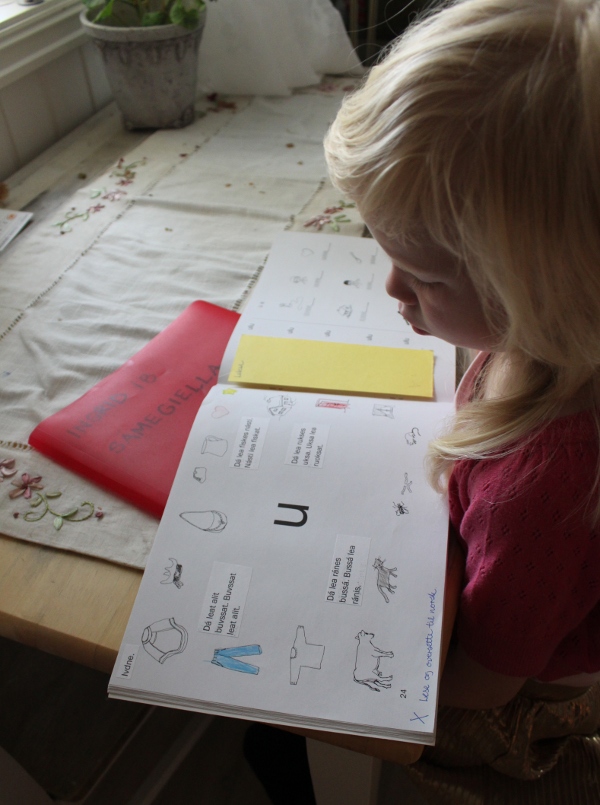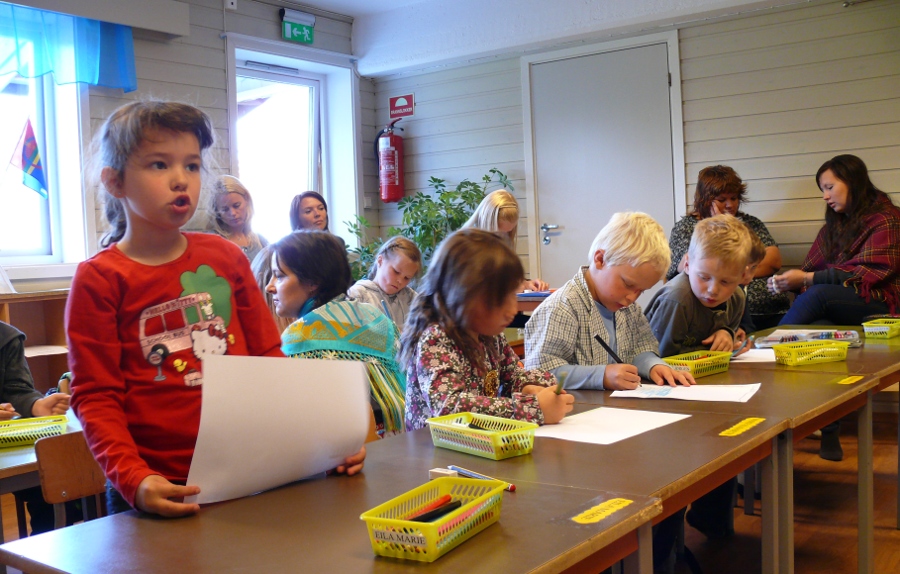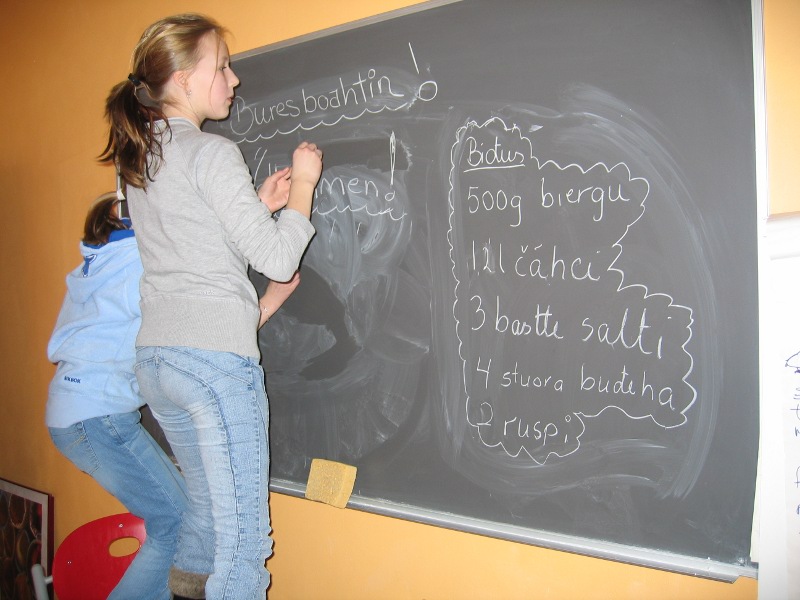 Sámegillii
Sámegillii  På norsk
På norsk
New articles for Ávvir 2013
32. 05.10.2013
Do you know Sami school history?Here we present a series of articles printed in Sami language in the newspapers Min Áigi and Ávvir from 2007 to 2013. The basis of the articles are stories which have been collected through the project “Sami school history”. There are edited 6 books with stories and articles from school life in the Norwegian part of Sápmi. In these articles there are many quotes from the books, and we refer to the articles the quotes are taken from, to make it possible to read the entire stories there.The chief editor of Sami school history, Svein Lund, is editing this series of articles. In addition Elfrid Boine, Siri Broch Johansen and Siv Rasmussen are part of the editorial staff.
|
In Sami school history we have had a look at the conditions for the Sami education in several cities, and here we give an account of some stories from Hammerfest, Alta and Oslo.
In Breilia upper primary school Berit has been teaching Sami language for several years. In the beginning the teaching took place after school hours, and since the Knowledge Promotion Reform the subject was taken into the timetable with equal status as other foreign languages. This means that the teaching is the sole responsibility of the school, the municipality does not carry any responsibility for the offer, such as Sami as first and second language, and there is no financial support from the County governor either. When we asked in the school office about the Sami teaching in Hammerfest, they did not mention Breilia school, since other foreign languages solely is the concern of the school.
– It is very difficult because I neither have an education as teacher or any education in the Sami language myself. And there is no one to ask for help and advice, neither about teaching aids nor teaching methods. There are never organized any meetings or collaborations between the Sami language teachers in the municipality, on the other hand there are organised common meetings between teachers who teach in the other subjects. ...
(Berit Oskarsen, Sami teacher in Hammerfest from 2000 – SSH4)
 | Homework in Sami as a second language, Alta 2012. (Photo: Heidi Persen) |
The first time I had the experience with Sami language in the school for my children was in 1990, when my eldest son started school. I was very happy when I got the letter sent home asking wether I would like Sami teaching for my child. ... My son often got remarks when he was going to the Sami teaching, for instance «where are your fur shoes»? I discussed the matter with the school, but their answer was «Harassment of Sami does not exist in this school». And consequently the theme did not exist and was unarguable. But the harassment affected the boy to such an extent that he wanted to quit learning Sami. ... As the school did not do anything to resolve the situation either, I had to give in.
Years later, in 2004, we became acquainted with Sami teaching in Alta again, as my second son started school in Kaiskuru. He learned Sami for a month. He has a mild handicap, and it was not possible to adjust the Sami subject to his needs. Consequently Sami was out of the question for him. The next one started school in 2007. When I was going to register him for Sami teaching in the first class in Kaiskuru school and called to ask for the registration form, I was told by the school inspector that I could not register him for Sami teaching, since there was no Sami teaching for the pupils in the first class. I found this a little bit strange, but thought that there had probably been some changes with Sami, as they happen all the time. ...
When my youngest child started the first class in Kaiskuru school in 2010, the school inspector told me that my daughter naturally had the right to Sami teaching in the first class, so she would be given that. With time I thought more and more about this, that the boy did not have any rights to Sami teaching and the girl did. I asked the school inspector about this a couple of times, without receiving any answer. ...
At the same time I noticed that Sami lessons disappeared without us receiving any notice about it. Some disappeared in singing lessons, reading weeks, but then the boy returned home telling that they had not had the Sami lesson because the teacher had to substitute a teacher in another class.. ...
Elvebakken school has been very difficult when it comes to Sami. The second eldest boy started learning Sami in the 5th class there. I never saw any curriculum and never any book, and when asking I was told that they were working «online», but I never saw any prints of exercises and we never got any evaluations.
When the second boy started there, he got a book, but I have never seen any written works. The teacher is often absent, without any teacher substituting him and we are not given notice when the teaching is cancelled. There is not made any aims for Sami in the weekly plan, as it is done for other subjects.
The school should take the same kind of responsibility for the Sami teaching as it does for other subjects. We parents should not have to continuously control that our children get the teaching they are entitled to.
(Heidi A. Persen, mother of Sami pupils in Alta from 1990 – SSH6)
 | From the Sami class in Alta. (Photo: Silje Muotka) |
Although we still did not have enough written responses that there were ten pupils who wished to follow teaching in Sami in Alta, we still chose to send our application to Alta municipality 21.01.2009 on the behalf of eight pupils. ... Underneath we were hoping the owner of the school might help us get an overview of the interest for such an offer in the school. ... Little did we know about the discussion this school offer would stir up in the public.
16.03.2009 we were informed that the Main committee for children and youth had discussed our wish to have an offer of teaching in Sami. «The Main committee chose to turn the application down on the grounds that there were only names of 9 pupils living in Alta on the list. ...»
Now the discussions about the offer intensified in the local newspapers and the local media. Among others the leader of the Main committee for children and youth in Alta, Otto Erik Aas (SV), stated that establishing a class which was taught solely in Sami could lead to limiting the offer for the other 400 pupils who were taught in Sami at the time to a reduced number of schools.
30.03.2009 the municipal council in Alta discussed the matter. The decision of the municipal council was formulated like this: "Alta municipal council rejects the application concerning establishing teaching offered solely in Sami for the school year 2009/10. The law's condition of 10 applicants is not being met."
I felt uncomfortable following the debate in Alta municipal council. In the debate there was among other things said from singular representatives in the municipal council that the best thing for Sami children is to «see to learn Norwegian». In my view the statement bears witness to a completely distorted view on how the situation of the Sami language actually is.
A week before the school started we still did not know whether there would be offered a Sami class or not.. ... I had more or less given up, therefore it was an incredible piece of news when the Plan committee of the municipality the 12.08.2012 made the final decision to establish the class despite that the number of pupils still was not confirmed. ...
The first day of school turned out to be an extra touching experience. It had not been a matter of course to get this class started, and it was special to see the 12 pupils who happy and hopeful began their schooling in the first Sami class in Alta.
(Silje Karine Muotka, mother of pupil in Alta from 2009 – SSH6)
 | Oslo:
Sami food is an important part of the Sami education. First the receipt is written in Sami language. (Photo lent by Berit Johnskareng) |
I have to say that on the part of the municipal school authorities there has been a lot of mess. ... The headmasters and school consultants working with this have been changing often, some have been working fairly good, others very bad. The last years it has been a terrible mess, no one is assuming any responsibility. Pupils have often been offered all the Sami lessons in addition to the other lessons, and outside regular school hours. It is a problem that has kept on returning.
In addition to the mess on the municipal level, there has also been weak knowledge and often direct resistance in the schools. Some schools have questioned the pupil's right to study Sami when there was only one Sami pupil in that school. ...
The rooms put at disposition for teaching have been very varying. We have been in classrooms, group rooms, bomb shelters and small rooms where there was stored all kinds of equipment. Once they put us in a small room where they stored musical instruments. It was so much dust and so cramped that we could not be in there. Then we moved out in the hallway. And not until then were we given a new and clean group room, which the school inspector had forgotten that they had! In another school we were in a bomb shelter. The air was so sultry we could barely breathe. When we had been there for a while we went to ask the school inspector if it would be possible to have another room. He jumped out of the chair, pulled us out in the hallway and pulled up the classroom doors one after another, while screaming: «This is full, this is full, this is full!» Tears started to run down my cheeks, but the two little girls took my hand and said: «Don't care about him, Bibi, he's just like that».
I believe there would have been a lot more Sami pupils if the municipality would have taken care to organize the offer better and to announce it well to the parents and the pupils. Oslo school office assert that they send out information about Sami teaching, but we see that it does not reach the parents, and therefore there are many who are unaware of the rights they have. And if the parents ask in school the teachers or headmasters do not know either. Therefore I believe there are many who would wish to have teaching in Sami, but who do not get that.
(Berit Johnskareng, Sami teacher in Oslo from 1983 – SSH6)